Welcome back to week eleven of Monday Magic: COVID Edition. It has been 121 days since my last summoning, now bringing our rather illustrious drought tally to a full four months since my Magic Consortium has sat at the same table and attempted to fireball each other to death.
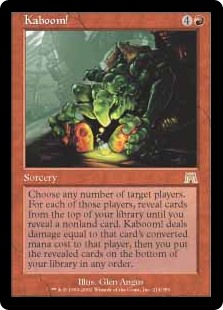
You get the idea
Like you do.
I am painfully aware of the current state the United States is in at the moment. It’s hard to ignore that although parts of the country were hit hard back in March, leading to a disjointed slate of lockdowns, resource shortages, and rampant anxiety, we collectively may actually be worse off now than we were then. Because while the early states are now (largely) on a downward trajectory, everyone else is moving in the wrong direction.
To put it mildly, a horrible combination of incompetence, impatience, ignorance, and ineffective leadership has allowed us to do something only one other country on the planet has accomplished: actually make things worse for ourselves.
So…yeah, it’s kind of hard to be cognizant of the thousands enduring pain and suffering at our own hand and then to turn around and espouse a First World problem as trivial as ‘I couldn’t play a card game with friends’.
That being said, this milestone does mark something I have done Magic-related for the first time in as many months: I opened a box of cards – in this case Ikoria. And it left me a little flummoxed.
So much so, in fact, that it’s the entire focus of our discussion today.
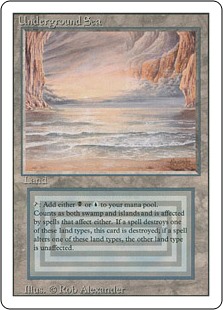
To be fair, 10 bucks is a lot for a 12 year old
I have long been a casual Magic player, but at one point in the first couple years of my tenure, I started collecting sets as well. It gave me something to do during the down periods when I wasn’t playing the game super frequently for one reason or another, allowing me to still enjoy an aspect of the game even if it wasn’t by way of actually playing it. I still remember eagerly working on completing my first set, which was Revised, and involved my mother driving me (to her dismay) to a place every weekend for an entire summer while I acquired each dual land I didn’t already own for $10 at a time.
Collecting has continued to be a central part of my Magic experience, as evidenced by the fact that I own more sets than not these days, excluding specialty or anthology sets.
Even with that in mind, I still don’t label myself as a Magic “collector” as most people define the group to be. I rarely seek out foils. I prefer my cards be in a language I can read. I don’t chase fancy promo cards or leap at supplementary products expressly showcasing special alternate art printings.
I do, however, like to have my sets, you know, complete. Which in and of itself has become increasingly more frustrating over the last few years.
Once upon a time, collecting a set was a pain in the neck. First, you needed to know the full set list. Then you needed to know their rarity. Then you went around trying to obtain them.
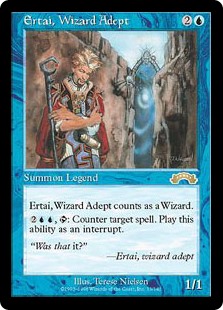
Thanks Ertai, AKA 33/143!
With Exodus, the process became exponentially easier with the rarity symbol and collector set number now being on the card. At the same time the internet was growing and set lists and comparative prices were now at your fingertips, which eliminated having to constantly borrow a friend’s Scrye magazine. If it said 15/264, you were confidently assured that there were 264 cards in that set. With these features you could now tabulate and track your set inventory without needing to cross-reference a database somewhere.
For many years things were great from a set collection standpoint. Then The Creep started…
Not power creep or complexity creep – product creep.
See, eventually Wizards started making some exceptions to the ‘collector number is sacrosanct’ mindset with core sets starting in M15 by printing cards outside of the normal range (technically reviving something they had briefly done in Eighth and Ninth Editions). These extra cards were outside of the normal set because they were exclusively made for Starter packs and Intro decks. While mildly annoying from a tracking perspective, there were usually just a handful of minor reprints and easy to track down.
Yet The Creep continued.
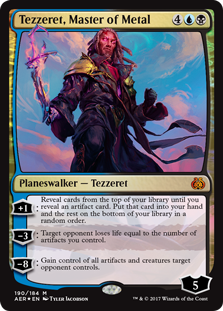
Fun fact: I actually prefer this version over the main set’s
Fast forward to Kaladesh, which replaced Intro decks with Planeswalker decks. Within each of these decks came five exclusive cards that were technically part of the set but couldn’t be obtained via booster and weren’t included in the collector number range. Unlike the core sets with Starter card reprints, though, the Planeswalker Deck exclusives – including at least one planeswalker per deck – were unique. Which made completing a given set that much more challenging.
Now you weren’t just chasing down the umpeenth printing of Serra Angel of Shivan Dragon but mythic planeswalkers – in addition to those already in the set. All of which essentially meant we were formally back to cross-checking lists, not to mention having to dole out more money to guarantee completion.
Ah, but The Creep was far from done. And that pain in the neck feeling returned.
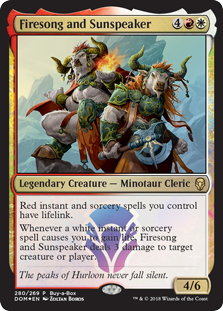
And they seem so harmless…
The grand return to Dominaria with its aptly named set brought with it another new collection wrinkle by way of the Buy-A-Box promo. Wizards had long offered a promo card to anyone who bought a booster box in a brick and mortar game store as an incentive to boost sales and support local business which are so essential to the game’s existence.
Until Dominaria though, these promo cards were simply alternate art foils of cards within the normal set. Starting with Dominaria, the Buy-A-Box promo was once again a unique card and technically part of the set despite not being able to get it via a box unless you ventured into a store. This move was particularly mixed among players, eventually boiling over into full-blown controversy with M19’s Nexus of Fate. But the practice continues to this day.
The Creep, it is insatiable.
When I finally finished sifting through my Ikoria box, a host of different thoughts were going through my head. For one, from mere observation the set seems like it’s one of the most complex standard sets in quite some time and seems like it is an absolute blast to draft it. COVID, I curse you once again for ruining fun everywhere.
On the other hand, I couldn’t help but almost feel a little overwhelmed by everything that was being thrown at me. There were the normal set cards, sure, but also Showcase art cards and Borderless planeswalker art cards. Ikoria also revived the Box Topper idea (basically the same idea as a Buy-A-Box but it’s included in the box itself), offering 1 of 15 randomized Magic cards with alternate art featuring various forms of Godzilla and other Japanese kaiju.
No, really.
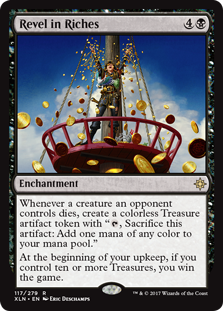
Depiction at the Hasbro accounting office
And all of that is just the classic draft booster box. If you’re particularly looking for premium variants there now also exists ‘collector’ booster boxes which are more expensive and offer, among other things, the chance at some of several dozen extended art versions of cards in the set, as well as several premium foils and some of those ‘out of range’ set cards a draft box doesn’t have.
Basic set collecting aside, it all felt like a lot to process, and I’ve been involved in the game in some form for 26 years. I can’t imagine what it would be like for a newcomer to wrap their head around all of the options being thrown at you.
None of this started in Ikoria, mind you. Most of this explosion of product options started appearing with Eldraine – which consequently also included a trial of Brawl decks in addition to Planeswalker decks that also had nearly two dozen unique cards to track down.
Unless apparently you want to pay more than twice the cost for fewer cards with a collector box. Which…no.
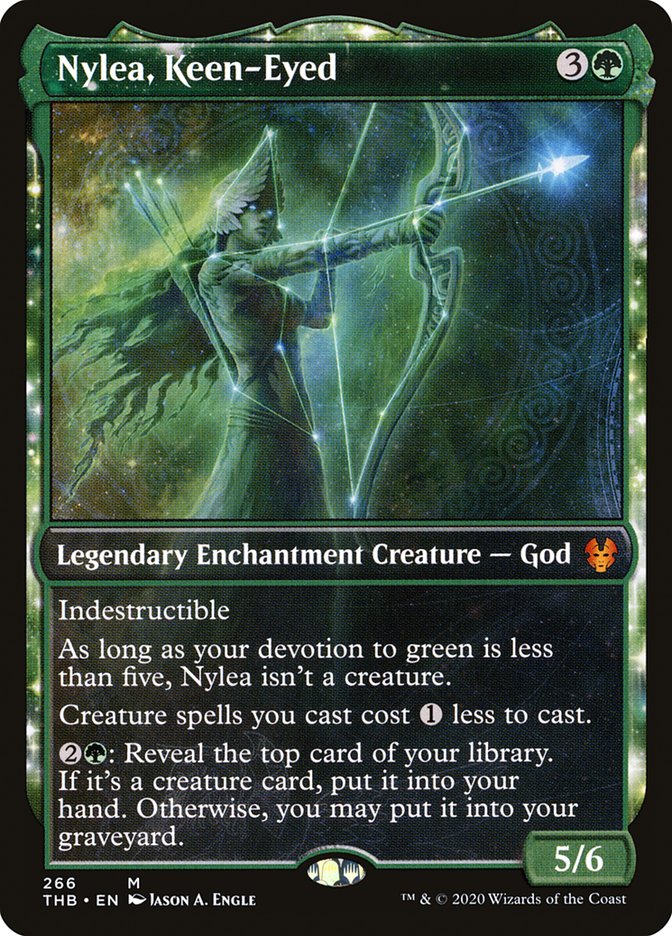
The Nyx Showcases are pretty cool looking
It’s not that every idea shoved into these boxes is bad. In isolation most make sense. I personally like the Showcase treatments, for instance. But I’m also fully aware that incorporating them into my set collecting would be yet another hurdle to overcome at a time when having to maintain the full checklist of normal cards without assistance is already much more arduous than it used to be.
Needless to say, product creep is real. Wizards is throwing a lot at you all at once nowadays, and I’m not sure it makes for a better experience. I understand that it’s all under the guise of providing players product flexibility and letting them exercise their buying power for what they specifically want. I am not a player who is motivated by bling, but I am fully aware that a lot of players are, so I get why the idea of shiny things and extended, borderless, and alternate art choices are appealing.
The connoisseur argument falters heavily in my mind, however, given that all of it is so incredibly random. Just like not knowing what the cards in a pack are, you have no guarantees you’ll get the specific arts and foils you seek, regardless of what you buy. Which ultimately means turning to the secondary market per usual.
When you combine all the different options being thrown at you in the same product along with having to go down several acquisition paths just to assemble a complete set list of cards, I frankly don’t see how it makes for a better buying experience. It mostly seems to just further feed FOMO and completionist tendencies – which for a game that already has that baked into its very model of existence is saying something. I shouldn’t be surprised given this is a collectible card game older than many of its players, but here we are. Instead, the whole thing smacks of over-saturation of their own brand and rampant conspicuous consumption more than freedom of choice. And to that, speaking as both a veteran casual as well as a casual collector, I think Wizards would be best served to reign it in a bit before they burn people out.
![]()
You can discuss this article over on our social media!
